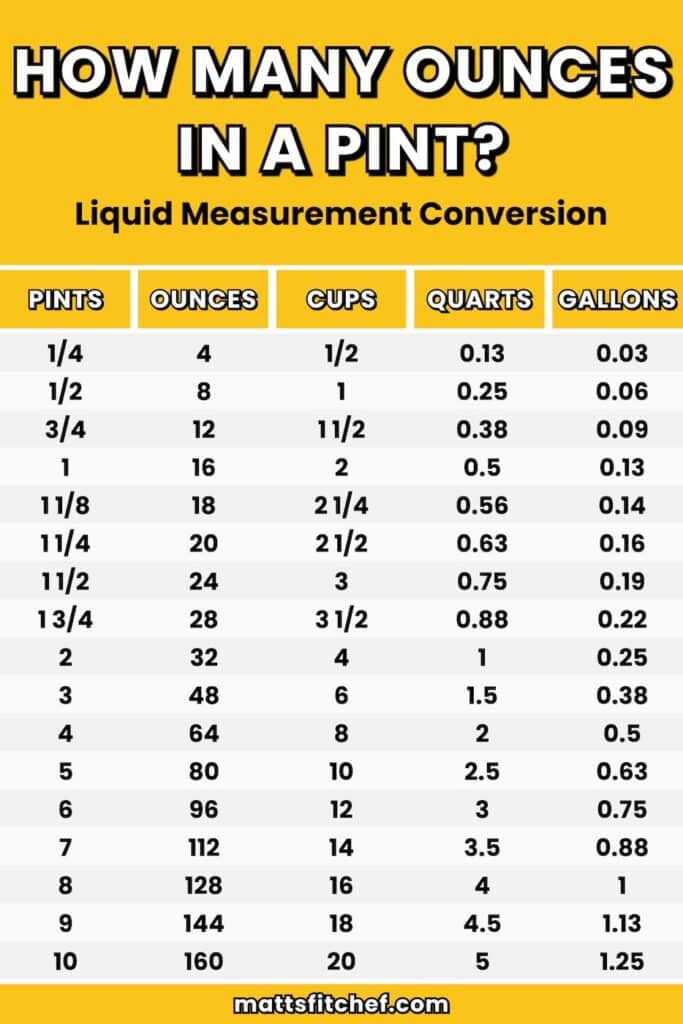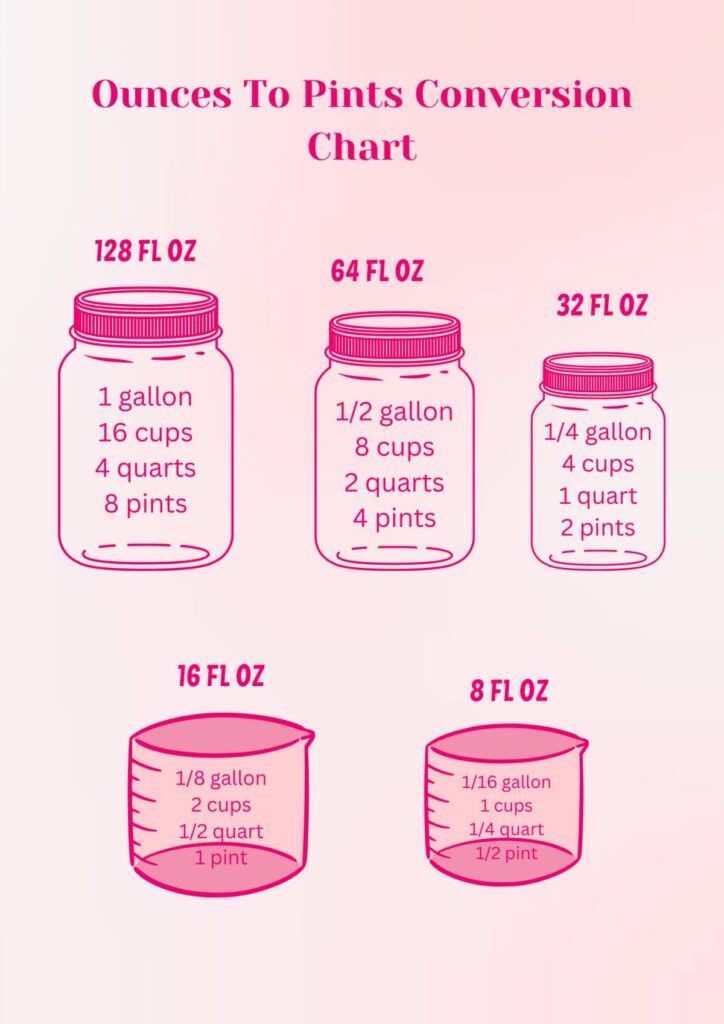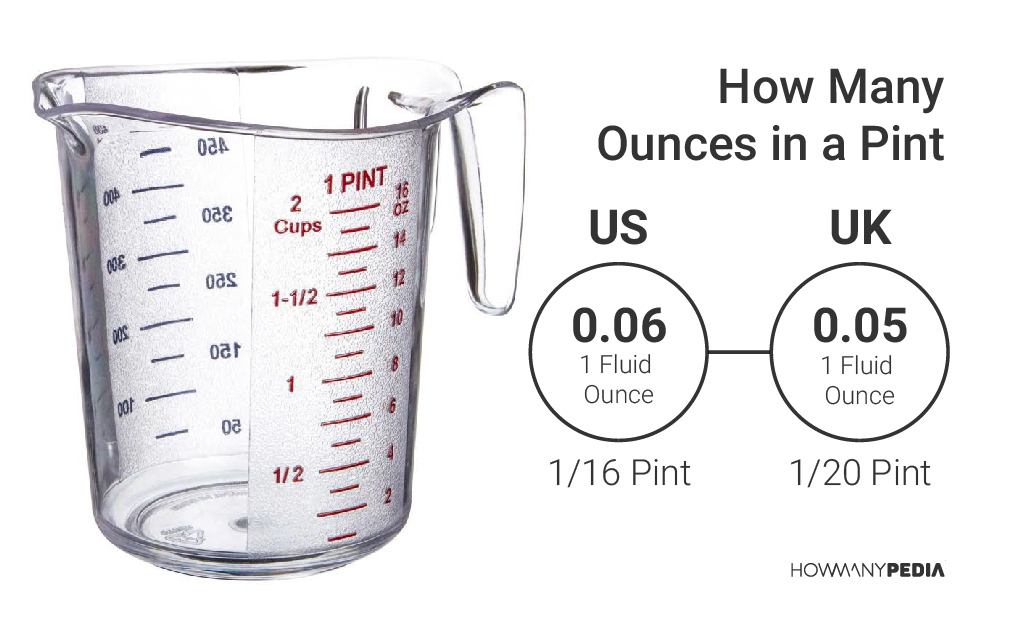Pints & Ounces: Conversions, UK Vs US, & More!
Ever found yourself staring at a recipe, utterly perplexed by the difference between a fluid ounce and an ounce? Understanding these seemingly small distinctions is crucial for any culinary endeavor, as even minor discrepancies in measurement can significantly impact the final outcome of your dish.
Navigating the world of liquid and dry measurements can feel like traversing a maze. We'll delve into the core concepts of ounces and fluid ounces, dissecting their differences, and exploring the methodologies for seamlessly converting between them. This guide is crafted to be your definitive resource, whether you're an aspiring home cook or a seasoned chef. The ultimate goal? To make certain your recipes turn out perfectly, every time.
| Measurement | Definition | Common Use | Conversion Notes |
| Fluid Ounce (fl oz) | A unit of volume, used for liquids. | Measuring liquids in cooking and baking (water, milk, oil). | In the US system, 1 pint = 16 fl oz. In the UK system, 1 pint = 20 fl oz. |
| Ounce (oz) | A unit of weight or mass. | Measuring dry ingredients, solids, or the weight of liquids. | The density of the ingredient affects the conversion. For instance, 16 ounces of flour will take up more space than 16 ounces of water. |
| Pint (pt) | A unit of volume. | Common for measuring liquids like beer, milk, and other beverages. | US pint = 16 fl oz. UK pint = 20 fl oz. |
| Cup (c) | A unit of volume. | Standard unit in cooking and baking. | 1 cup = 8 fl oz |
| Quart (qt) | A unit of volume. | Larger volume measurement for liquids. | 1 quart = 2 pints = 32 fl oz |
| Gallon (gal) | A unit of volume. | Largest common unit of volume. | 1 gallon = 4 quarts = 8 pints = 128 fl oz |
To truly grasp the intricacies of measurement, it's essential to look beyond the surface. Let's begin by unraveling the essence of the pint, a unit of volume that has a pivotal role in both cooking and everyday life.
In the U.S. customary system, a pint is defined as 16 fluid ounces, which is equivalent to two cups. To better visualize this, think of a standard pint of milk you can easily fill two standard-sized coffee cups with it. Consider also that a pint of fresh strawberries roughly corresponds to 16 ounces of berries, which typically fits comfortably within a small container or a couple of handfuls.
However, the story of the pint becomes more nuanced as we cross the Atlantic. In the United Kingdom (UK), the imperial pint holds 20 fluid ounces. This distinction is vital, especially if you're comparing recipes or measuring ingredients from different regions. A pint of beer in a UK pub will be a slightly larger pour than its American counterpart, and this variation extends to measuring ingredients in the kitchen.
The use of fluid ounces (fl oz) is critical, particularly when working with liquids. The U.S. fluid ounce is defined as 1/16 of a U.S. fluid pint and 1/128 of a U.S. liquid gallon. It is equivalent to approximately 29.57 milliliters. Meanwhile, the imperial fluid ounce, used in the UK, is defined as 1/20 of an imperial pint and 1/160 of an imperial gallon, and is roughly equal to 28.41 milliliters. These variations in measurement standards make understanding the context of your recipe or measurement crucial.
When converting fluid ounces to pints, the task is simplified by a straightforward formula. Since one pint is equal to 16 fluid ounces in the U.S. system, to convert any measurement in fluid ounces to pints, simply divide the volume by 16. For instance, if a recipe calls for 32 fluid ounces of liquid, dividing by 16 gives us 2 pints. The same principle applies in the UK but involves dividing the volume of fluid ounces by 20 to arrive at the imperial pint equivalent.
On the other hand, converting pints to fluid ounces requires a slightly different approach. To convert pints to fluid ounces, you multiply the number of pints by 16 (in the U.S. system) or 20 (in the UK system). If a recipe indicates you need 2 pints, the calculation is as follows: 2 pints multiplied by 16 fluid ounces per pint equals 32 fluid ounces (in the U.S.).
The concept of density introduces another layer of complexity, particularly when converting between ounces and pints for dry ingredients. Density, defined as the mass per unit volume of a substance, plays a critical role. To convert ounces to pints, the formula is: Ounces = Pints 16.6908 density. For example, if you need to convert 5 pints of an ingredient with a density of 0.7 g/ml, the calculation would be: 5 pints 16.6908 0.7 g/ml = 58.4178 ounces. This formula takes into account the variance in ingredient densities, allowing for accurate conversions.
It is important to differentiate between the "dry pint" and the "liquid pint", especially in the U.S. customary system. A dry pint typically contains a slightly greater volume than a liquid pint, mainly because dry ingredients settle in a container, making the actual weight of the ingredients in the container greater. The dry pint is typically used for measuring dry goods, such as flour or sugar, and is equivalent to 1/64 of a U.S. bushel. The liquid pint, on the other hand, is used to measure liquids. Remember, a dry pint typically contains 18.62 ounces, while a liquid pint is equivalent to 16 fluid ounces.
A quart is a measurement equal to 2 pints (32 fluid ounces) or 4 cups. A gallon is the same as 16 cups or 8 pints. These are especially helpful for handling larger quantities. Therefore, always consider your recipe needs and make adjustments accordingly.
To further illustrate the practical applications of these conversions, imagine you have a recipe that calls for 5 dry pints of flour. Given that a dry pint is roughly equivalent to 18.62 ounces, multiplying this quantity by 18.62 will give you the approximate equivalent weight in ounces. Similarly, if a recipe needs 2 dry pints of sugar, the conversion is straightforward: 2 pints multiplied by 18.62 would give you the corresponding ounce measurement.
When considering beer, a standard stein often holds a bit more than two U.S. pints or just under two UK pints. This means, if you are looking for a precise measure, always consider the definition of "pint" being used regionally.
If you're using a fluid ounce to pint calculator, remember that you can also view more details on each measurement unit using such a tool. You must be aware of potential rounding errors.
Lets address some frequently asked questions:
Is 16 ounces the same as 1 pint?
In the U.S. customary system, 16 fluid ounces is equal to 1 liquid pint. However, this is where it can get tricky: in the imperial system (UK), 1 pint equals 20 fluid ounces.
How many ounces are in a pint of milk, beer, yogurt, and more?
A U.S. pint is equivalent to 16 fluid ounces. So, a pint of milk or yogurt would typically contain 16 fluid ounces. However, the weight of the same volume will depend on the density of the material. A pint of beer in the UK usually comes in at 20 fluid ounces, since the UK uses the imperial pint. As an example, in the U.S. system, 1 pint of strawberries is roughly 16 ounces.
How many ounces are in an imperial pint (UK)?
In the UK, an imperial pint of beer is a little heavier, usually coming in at 20 fluid ounces.
In essence, the ability to confidently move between these measurements is a fundamental skill in cooking and baking. By remembering the basic formulas, understanding the differences between U.S. and UK systems, and considering density, you will be well-equipped to approach recipes with accuracy and flair. Accurate conversions are not just about following instructions; they are about unlocking the true potential of a recipe.


